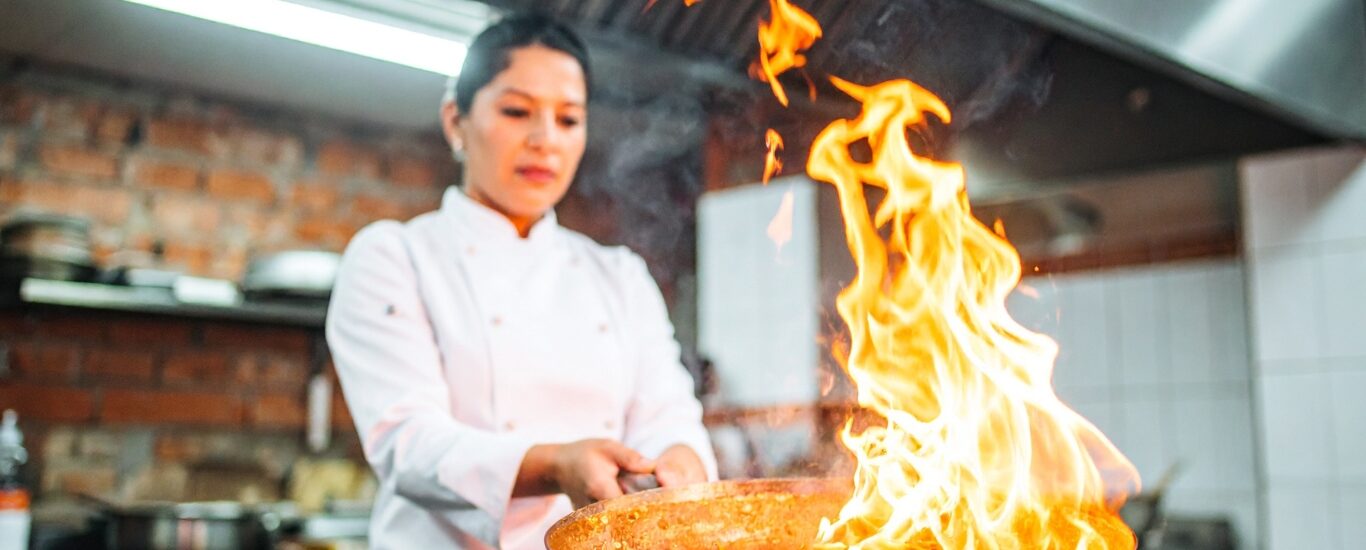Food is the heart of a restaurant — but it’s also the biggest cost and the greatest risk. Industry benchmarks say food costs should hover around 28–32% of sales, but the truth is, most restaurants miss that target. In fact, according to RestaurantOwner.com, nearly one in three restaurants lose money primarily due to uncontrolled food costs.
Why? Because food cost control is not just about buying cheaper ingredients. It’s about precision, consistency, and visibility — and that’s where strong bookkeeping becomes the difference between profit and failure.
Let’s go beyond the basics and explore the hidden tricks that top-performing restaurants use to take control.
1. Recipe Costing: Science, Not Guesswork
Most owners think they know their recipe costs. But unless they’ve weighed every ingredient, calculated yields, and updated the numbers for current vendor prices, they’re often wrong.
Advanced breakdown:
-
- As Purchased (AP) Cost vs. Edible Portion (EP) Cost: A 50 lb case of onions might cost $25, but after peeling and trimming, only 40 lbs are usable. That means the true cost per pound is higher.
-
- Cooking Loss: Proteins shrink 20–30% during cooking. Ignoring this underestimates costs.
-
- Overlooked Ingredients: Oil, garnishes, and condiments add up — a drizzle of olive oil may only be $0.10, but multiplied across thousands of dishes, it matters.
Bookkeeping integration: A good system connects vendor invoices to recipe sheets, automatically updating costs as prices fluctuate — so margins don’t disappear silently.
2. Portion Control: Small Variances, Big Losses
A ladle that’s slightly too large. A cook who eyeballs steak sizes. A server who pours heavy on dressings. These small inconsistencies add up to thousands lost each month.
Example math:
-
- Standard burger patty = 6 oz.
-
- Over-portion by 0.5 oz per patty = $0.25 extra cost.
-
- Sell 300 burgers per week = $75 lost weekly, $3,900 yearly — on one item.
Hidden trick:
-
- Use color-coded ladles, scoops, and scales to enforce precision.
-
- Train staff that consistency is not only about flavor — it’s about profit.
Bookkeeping connection: Variance reports comparing actual food usage to theoretical food usage will highlight portion issues quickly.
3. Waste Tracking: The “Invisible Line Item”
Spoilage, mistakes, and comps don’t always show up in food cost percentages — unless tracked. Many restaurants lose 2–6% of revenue simply from waste.
Best practice:
-
- Maintain a waste log with reasons: spoilage, misfire, comp, theft.
-
- Review logs weekly to identify trends (e.g., over-ordering produce, or certain cooks burning steaks too often).
Bookkeeping connection: Waste should be categorized as a direct cost of goods sold (COGS). Without logging it, owners believe their food costs are lower than they truly are — a dangerous illusion.
4. Inventory Discipline: The Bedrock of Cost Control
Inventory is where most restaurants fail. Many count once a month (or less), which hides leaks. The most successful operators do it weekly, same day, same time.
The math:
Food Cost % = (Beginning Inventory + Purchases – Ending Inventory) ÷ Sales
-
- Example:
-
- Beginning inventory: $10,000
-
- Purchases: $5,000
-
- Ending inventory: $9,000
-
- Sales: $20,000
-
- Food cost = (10,000 + 5,000 – 9,000) ÷ 20,000 = 30%
-
- Example:
Bookkeeping connection: With weekly inventory entered into bookkeeping software, restaurants can spot deviations immediately instead of waiting until the end of the month.
Run your business with confidence
Get help and guidance when you need it from real bookkeeping experts at Eric Buchholz Bookkeeping… Get Started right HERE!
5. Vendor Management: Controlling the Supply Chain
Vendors are partners, but they’re also salespeople. Over-ordering, unnecessary upsells, and creeping costs can kill margins.
Hidden tricks:
-
- Bid Pricing: Compare multiple vendors for core items quarterly.
-
- Par Levels: Set strict order quantities based on sales trends, not vendor recommendations.
-
- Invoice Audits: Catch “price creep” — when a case of tomatoes goes from $25 to $28 unnoticed.
Bookkeeping connection: Automated invoice entry makes vendor price tracking transparent. A bookkeeper can flag items that have risen in cost before they affect margins.
6. Menu Engineering: Data-Driven Design
Not every dish belongs on the menu. “Stars” (popular and profitable) should be highlighted, while “Dogs” (low margin, low sales) should be reworked or removed.
Contribution margin vs. food cost %:
-
- A $12 burger with $5 food cost = $7 profit, 42% food cost.
-
- A $25 steak with $12 food cost = $13 profit, 48% food cost.
The steak looks worse on food cost %, but actually contributes more dollars. Bookkeeping systems that merge recipe costing with sales reveal which items really drive profits.
7. Shrinkage, Theft, and “Disappearing Food”
Unfortunately, theft is real. Staff meals, freebies, or “forgotten” drinks add up. Industry studies estimate restaurant theft accounts for 4% of food cost.
Controls:
-
- Limit comp authority to managers.
-
- Require staff meals to be logged.
-
- Cross-check POS sales against inventory depletion.
Bookkeeping connection: Variance analysis between theoretical and actual food usage quickly uncovers shrinkage.
8. Forecasting: Matching Food to Sales
Over-ordering is the silent killer. If sales drop and inventory sits, waste follows. Forecasting food needs based on historical sales (adjusted for seasonality) keeps costs tight.
Bookkeeping connection: Bookkeepers use historical financials to build cash flow forecasts, helping owners set smarter order levels.
Why Bookkeeping Is the “Invisible Chef”
Good bookkeeping isn’t just about taxes — it’s about turning raw numbers into insights that save thousands:
-
- Tracks true food cost %, not guesses
-
- Flags waste, theft, and over-portioning
-
- Provides menu profitability analysis
-
- Connects vendor prices to recipe sheets
-
- Creates forecasts to reduce over-ordering
In other words, bookkeeping turns the chaos of a restaurant kitchen into measurable, manageable data.
Final Word
Food cost control is not glamorous. It’s not as exciting as creating a new dish or launching a seasonal menu. But it’s the foundation of profitability. Without it, even the busiest restaurant can fail.
With it, owners gain confidence, stability, and growth — and it all starts with visibility, powered by smart bookkeeping.
Because while food feeds the guests, the numbers feed the business.
Ready to get started?
Take routine bookkeeping off your never-ending to-do list with the help of a certified professional. At Eric Buchholz Bookkeeping, we can help ensure that your business’s books close every month, and you’re primed for tax season. Our expert certified QuickBooks ProAdvisors have over 25 years of experience working with small business bookkeeping across various industries.
Whether you’re learning how to streamline your accounting to save time, or how to set-up your chart of accounts for the first time, Eric Buchholz Bookkeeping can guide you down the right path. Schedule your FREE phone consultation today!… Simply CLICK HERE.





